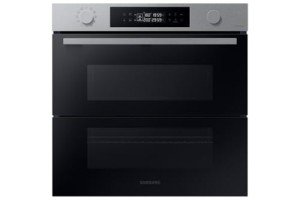5 Integrated Hob And Oven Lessons Learned From Professionals
Integrating Cooking: A Comprehensive Guide to Integrated Hobs and Ovens
In the modern kitchen, effectiveness combines effortlessly with design. An integrated hob and oven system represents this mix, using both functionality and visual appeal. As home cooks seek ways to boost their cooking areas, comprehending the benefits and features of integrated hobs and ovens ends up being vital. This short article looks into the numerous elements of integrated cooking appliances, supplying insights into their advantages, setup considerations, and upkeep tips.
What is an Integrated Hob and Oven?
An integrated hob and oven setup refers to the style in which the cooking hob (the surface on which pots and pans are positioned to prepare food) and the oven (the home appliance used to bake, roast, and broil) are designed to fit seamlessly into kitchen cabinet systems. This cohesive design not just saves area but also improves the visual uniformity of the kitchen.
Key Features of Integrated Hobs and Ovens
- Space Efficiency: These appliances are designed to fit within basic cabinets, optimizing kitchen space while allowing for more storage alternatives.
- Elegant Appearance: Integrated models offer a smooth, modern appearance that can elevate any kitchen's aesthetic.
- Enhanced Functionality: Many integrated systems feature sophisticated features such as induction cooking, self-cleaning ovens, and wise technology compatibility.
- Much better Usability: Placing the hob at a proper height and having the oven easily situated listed below can enhance cooking ergonomics.
Advantages of Integrated Hobs and Ovens
The growing preference for integrated hobs and ovens occurs from numerous associated advantages:
1. Space-Saving Design
- Integrated appliances eliminate the need for large standalone units.
- They enable for more counter area, creating a practical work space for food preparation.
2. Visual Cohesion
- Integrated systems can be completed to match cabinetry, supplying a sleek and unified appearance.
- The kitchen can maintain a minimalist style, devoid of visual mess.
3. Superior Functionality
- Functions like touch controls, timers, and automated cooking programs can improve the cooking experience.
- Induction hobs can supply faster cooking times and more exact temperature control compared to standard gas or electric hobs.
4. Energy Efficiency
- Many contemporary integrated ovens feature enhanced insulation and energy-efficient features, lowering energy consumption.
- Induction hobs use energy straight in the cookware, resulting in less heat loss and faster cooking.
Setup Considerations
When considering an integrated hob and oven, a number of elements must be examined during setup.
1. Space Measurements
- Kitchens Layout: Ensure the dimensions of the readily available space accommodate both the hob and oven.
- Ventilation: Adequate ventilation is vital to avoid overheating and guarantee effective operation, especially with gas designs.
2. Electrical and Gas Connections
- Power Supply: Verify that the kitchen's power supply meets the appliance requirements (voltage, amperage).
- Gas Lines: For gas hobs, professional installation may be required to ensure safety.
3. Personalization and Finishes
- Pick surfaces that match kitchen interiors, such as stainless steel, glass, or even custom cabinetry to conceal the appliances.
4. Availability
- Guarantee that both the hob and oven are easily reachable. integrated electric oven and hob will enhance the cooking experience and make it more secure.
Integrated Hob and Oven Models
Model
Type
Key Features
Rate Range
Bosch Series 4 HBG634BBR
Built-In
Wi-Fi connection, several cooking modes
₤ 1,200 – ₤ 1,500
Samsung NZ48K7570UG
Induction
Flex zone, smart innovation, touch controls
₤ 1,500 – ₤ 2,000
Miele H 6260 BP
Built-In
Self-cleaning, automatic programs, sleek design
₤ 2,500 – ₤ 3,500
NEFF B57VR22N0
Multifunction
Slide&& Hide door, advanced heat distribution
₤ 2,000 – ₤ 2,500
Upkeep Tips
To make the most of the life and functionality of integrated hobs and ovens, proper upkeep is vital:
- Regular Cleaning: Clean the hob and oven routinely to avoid buildup from spills and food residues. Usage non-abrasive cleaners to safeguard surface areas.
- Check Seals and Gaskets: Check oven door seals to ensure effective heating and avoid energy loss.
- Check for Damage: Regularly examine gas hose pipes, electrical cables, and connections for wear or damage. Immediate repair or replacement is crucial for security.
- Follow Manufacturer's Guidelines: Adhere to the specific maintenance guidelines provided by the manufacturer for optimum efficiency.
FAQs
1. Can I install an integrated hob and oven myself?
- While some house owners choose DIY installation, it is suggested to hire a professional, specifically when gas connections or electrical circuitry are involved.
2. Are integrated hobs and ovens energy-efficient?
- Lots of modern integrated systems are created with energy effectiveness in mind, including thermal insulation and energy-saving modes.
3. What is the best product for an integrated hob and oven?
- Stainless-steel is popular due to its durability, ease of cleaning, and resistance to rust. However, glass ceramic and enamel-coated options also provide aesthetic appeal.
4. How do I troubleshoot common problems with integrated hobs and ovens?
- Refer to the user manual for troubleshooting guidelines. Standard problems like power failures or irregular cooking may frequently be fixed through simple modifications or resets.
An integrated hob and oven system uses a combination of functionality and design that aligns with contemporary kitchen styles. By understanding the advantages, setup requirements, and upkeep suggestions related to these appliances, property owners can make informed decisions that improve their cooking experiences. As kitchens evolve into multifunctional areas, integrated cooking services will continue to acquire appeal, forming the future of culinary spaces.
